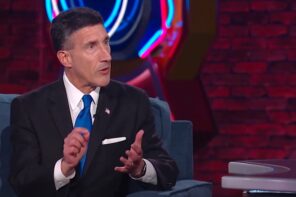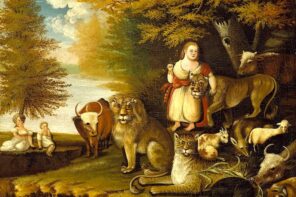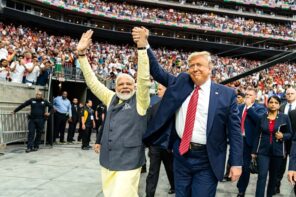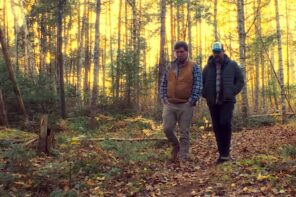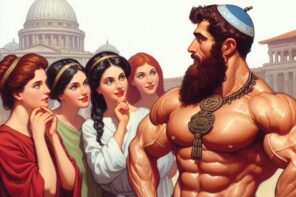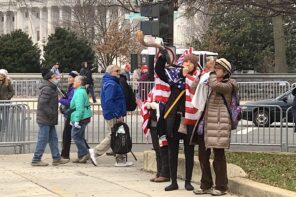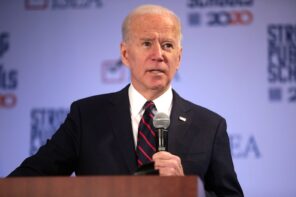Within the Israeli landscape there are many secret installations, most of them associated with advanced weapons systems. Israelis therefore, are not surprised to come across construction sites clearly marked “keep out/danger.” It is somewhat more surprising to come across an Israeli urban building project shrouded in secrecy. This has been the experience of many people walking through the old Jerusalem neighborhood of Mamilla, which lies between the walls of the Old City and the center of West Jerusalem. The construction site abuts the edge of Gan Haatzmaut, Independence Park. Here one finds what Haaretz, Israel’s newspaper of record, had dubbed “Israel’s most secret civilian building site.” The site has been under construction for the past six years.
When I first walked by the large fenced-off area I wondered if it was an extension of the American Consulate (which is nearby), or an office of the Shin Bet, the Israeli security services. For the site is completely obscured by a metal fence eighteen feet high. I couldn’t find any of the peek-holes that dot construction fences through out the world. This secretive construction was going on at the site of what had until recently been a parking lot adjacent to the Muslim cemetery in Mamilla. Eventually a sign went up announcing that construction was to be the home of “A Center for Human Dignity—Museum of Tolerance Jerusalem.”
The parking lot had been built in the early 1960s over the site of the Muslim cemetery. But there were no protests at the time. The Israeli authorities were focused on solving the city center’s parking needs (which were problematic even back in the ’60s) and those Israeli Arabs who might have objected to the desecration of the cemetery were controlled by the censorship of the military government, under which all Israeli Arabs lived until 1966.
Jerusalem: A City or An Idea?
After the 1967 war, the situation changed radically. ‘Jerusalem’ the idea, rather than Jerusalem the actual city inhabited by a rich mix of peoples, became a cause—national and religious and cultural. Like other great cities with a deep historical past, Jerusalem has many citizens who are enthusiastic and knowledgeable about the city’s landscape and history. And because it is the “City of three Faiths” it has many supporters and “fans” throughout the world. But fans of Jerusalem, unlike fans of Paris, Cairo, or New York, are a bitterly divided groups of fans, with fiercely contending understandings of the city’s history and landscape. For Jerusalem, though “united” by Israeli government fiat after the 1967 War, remains a deeply divided city. Its Jewish and Arab citizens live in a very uneasy balance, one easily upset, as the political events of this year, and each of the forty-three years since 1967 has demonstrated. Jerusalem’s great symbolic value for Muslims, Christians, and Jews has long overshadowed the lives of its citizens, and has rendered impossible any prospects of improving the situation.
The official Israeli presentation of life in post-1967 Jerusalem may be glimpsed in the “Jerusalem” entry in the Encyclopedia Judaica: “By 1970, district progress had been made in the process of integrating the Arabs of East Jerusalem into the life of the city and inter-ethnic relations developed and improved, despite negative forces that operated throughout the period.” This was not true in 1972 when the article was written; it surely is not true today.
The daily experiences of those who lived in Jerusalem in those years, myself among them, contradicts these assertions. While Israeli Jews continued to visit the Old City and referred constantly to Jerusalem as “united,” one third of the population, the Arabs who lived in the formerly Jordanian-held parts of the city, considered themselves to be under harsh military occupation. Today, forty-three years and two generations later, they and their descendants continue to express their discontent with Israeli rule.
But the rhetoric of Israeli rule, a rhetoric of “coexistence” and “unification” persists. And it is remarkably persuasive. So much so that any “unrest” in Jerusalem is perceived in the United States as a manifestation of ‘communal’ or ‘inter-ethnic strife.’ As if to say: We all know that Jews and Arabs can’t get along; and here they are at it again. It is as if Jerusalem was Los Angeles with its rival gangs, and the problem is how to ‘stem the violence.’ (Note the phrase “inter-ethnic” relations in the Encyclopedia Judaica article.) If that is the case perhaps a “Museum of Tolerance” would ameliorate the situation.
As British historian Bernard Wasserstein wrote nearly a decade ago, “the eternally unified capital” of the State of Israel is the most deeply divided capital city in the world. Its Arab and Jewish residents inhabit different districts, speak different languages, attend different schools, read different newspapers… live, in almost every significant respect, different lives… Above all, Arabs and Jews inhabit different mental worlds, informed by fundamentally different ideological axioms, infected with profound collective suspicions of each other and infused with mutual dread that has repeatedly exploded into hate-filled aggression.”
Californian Foreign Policy
It was in this maelstrom of political tension and religious emotion that the California-based Museum of Tolerance decided in the mid-1990s to build a branch of its Los Angeles campus. For those not familiar with Jerusalem’s recent history, a museum of Tolerance might seem just what the city needs. And as for calling it “a Center for the Human Dignity”—what could be wrong with that? The Los Angeles Museum of Tolerance is named for Nazi-hunter Simon Wiesenthal. Founded in 1993 by Marvin Hier, an Orthodox Rabbi ordained at New Yeshiva University, the museum has been immensely successful. Well-funded and well-known, the museum attracts over a quarter of a million visitors a year. Rabbi Hier has forged ties with many influential California politicians and celebrities—and seems especially drawn to that unique California creature, the celebrity politician. For the 2004 groundbreaking ceremony of the museum’s Jerusalem branch, Hier brought Governor Arnold Schwarzenegger to Israel. The former bodybuilding champion showed his deep understanding of Middle Eastern politics when he remarked to Silvan Shalom, Israel’s foreign minister, that the new museum would promote tolerance “just as building health clubs promoted health.”
This was not the first time that the Wiesenthal Center and the LA Museum of Tolerance formulated its own foreign policy; and in doing so implied that they were speaking for the American Jewish community at large. The center endorsed enthusiastically the Bush administration’s Iraq War, and in 2006 it dubbed Venezuelan President Hugo Chavez an anti-Semite.
A museum of tolerance: a center for human dignity built over a graveyard? The very idea seems grotesque. Is this a sick joke? It seems not. It is a political statement: All issues in Jerusalem will be decided by the Israeli government, exclusively so. The virulent responses to President Obama’s attempts to find a workable plan for Jerusalem’s future are a powerful indication of how the Israeli government position plays in Washington. Elie Wiesel’s open letter to Obama, published in full page ads in major American newspapers, has helped to put an end to any negotiations about contending claims in Jerusalem. Jerusalem, Wiesel wrote, should be ‘above politics’ (a phrase which is, of course, code for ‘Israeli policies in Jerusalem should not be challenged’).
Less well-publicized than Wiesel’s open letter was the letter to Wiesel by one hundred Israeli Jewish citizens in the May 27, 2010 issue of the New York Review of Books:
We write to you from Jerusalem to convey our frustration, even outrage, at your recently published letter on Jerusalem. We are Jewish Jerusalemites—residents by choice of a battered city, a city used and abused, ransacked time and again first by foreign conquerors and now by its own politicians. We cannot recognize our city in the sentimental abstraction you call by its name.
Our Jerusalem is concrete, its hills covered with limestone houses and pine trees; its streets lined with synagogues, mosques, and churches. Your Jerusalem is an ideal, an object of prayers and a bearer of the collective memory of a people whose members actually bear many individual memories. Our Jerusalem is populated with people, young and old, women and men, who wish their city to be a symbol of dignity—not of hubris, inequality, and discrimination. You speak of the celestial Jerusalem; we live in the earthly one.
For more than a generation now the earthly city we call home has been crumbling under the weight of its own idealization. Your letter troubles us, not simply because it is replete with factual errors and false representations, but because it upholds an attachment to some otherworldly city that purports to supersede the interests of those who live in the this-worldly one. For every Jew, you say, a visit to Jerusalem is a homecoming, yet it is our commitment that makes your homecoming possible. We prefer the hardship of realizing citizenship in this city to the convenience of merely yearning for it.
In the conclusion of Divided Jerusalem, Bernard Wasserstein asserted that “the struggle for Jerusalem can be resolved only when there dawns some genuine recognition of the reality and legitimacy of its plural character.” The Israeli government claim, often voiced by Benjamin Netanyahu and other politicians or the political right that Jerusalem is “Israel’s eternal undivided capital” is a blatant denial of the possibility of a “plural” future for Jerusalem. Claims made by any other religious, ethnic or political group are thus dismissed a priori; only Jewish claims are considered, or even mentioned.
“An Erasure of the Muslim Past”
For the Arabs of Jerusalem and of the rest of Israel, the construction of the Museum of Tolerance is an affront to human dignity, for it involves the desecration of a large Muslim cemetery. The cemetery lies under a parking lot constructed in the 1960s and it extends far beyond it into the area of Independence Park and into what remains of the original Mamillah cemetery. The cemetery had been in continuous use from the tenth century until the early twentieth century. Hundreds of skeletons have been exhumed from the museum construction site. Most of those exhumations were done in a six month period between November 2008 and April 2009.
If the museum project was started in 2004 why did the exhumations take place only last year? Because Israeli citizens took the case to court. Until November 2008 excavation of the site was held up by a court injunction. The Israeli High Court of Justice (the equivalent of the US Supreme Court) decided in October of that year to reject the request of the Islamic Movement of Northern Israel that the construction be halted as it constitutes a desecration of Muslim holy place. The court rejected the Islamic Movement’s petition. Work at the museum then proceeded at a furious pace. Working around the clock, the excavators exhumed the graves under the supervision of an Israeli archeologist. The number of skeletons taken out of the site numbered between one thousand and fifteen hundred. According to Gideon Sulaimani, an archeologist who worked at the site before the court injunction went into effect “They call this an archeological excavation but it’s really a clearing-out, an erasure of the Muslim past.”
In 1984, George Orwell’s great satire of totalitarian regimes, there is a maxim that speaks directly to the contending presentations of Jerusalem’s history. “He who controls the present controls the past. He who controls the past controls the future.” Both Israelis and Palestinians have constructed mutually exclusive and antagonistic narratives of Jerusalem’s past. Israel’s narrative focuses on Kings David and Solomon and on the First and Second Temples. The Palestinian narrative focuses on Jerusalem since the Muslim conquest of 636 CE. But in the realm of politics and power these competing narratives are not on an equal footing. Israel, the victor in the 1967 War and the occupying power in East Jerusalem since then, wields the political and military power in the City. In the Christian West, a biblically-conditioned view of Jerusalem favors the perception that Jerusalem “belongs” to Israel.
Israel’s leadership, beginning with its first Prime Minister, David Ben Gurion, has always been acutely aware of this “biblical” worldview of Jerusalem and cultivates it continually. In 2000, at the United Nations “Millennium Summit,” then Prime Minister Ehud Barak made the case for continued Israeli control over all of the holy city, east and west. Very astutely, and unexpectedly, Barak used the New Testament, rather than to the “Old Testament’ to buttress his case for continuing Israeli sovereignty in Jerusalem. Referring to the ‘unrest’ at Jerusalem’s Temple Mount/Haram al-Sharif Barak told the UN delegates
“I believe that the very words Temple Mount in every Western language carry the real story of this place. When we think of Jesus walking in the streets of Jerusalem, what he saw there was not a mosque, nor even a Christian church. What he saw was the Temple—the Second Temple of the Jews.”
Is it surprising that Israel’s Prime Minister, a well-known hiloni—or Jewish secularist—would invoke the name of Jesus? No. He understands the power of Christian Zionist ideas. Like Ehud Barak, Rabbi Hier too understands that many Christians, especially American Evangelical Christians would approve of his dismissal of Muslim concerns about the sanctity of the museum’s construction site. For long before the State of Israel was established, conservative evangelicals had expressed extreme hostility to Islam, “the imposter religion,” as it was known in some late 19th- and early 20th-century Protestant circles.
A century and a half ago Herman Melville, author of Moby Dick, spent a few weeks in Jerusalem. He was despondent before the visit, and even more so afterwards. Jerusalem, for Melville, represented the past, not the future. In his journal he noted that “Jerusalem is besieged by an army of the dead.” He penned that observation in 1860. Today, a century and a half later, his words seem even more ominous, and even more true.
